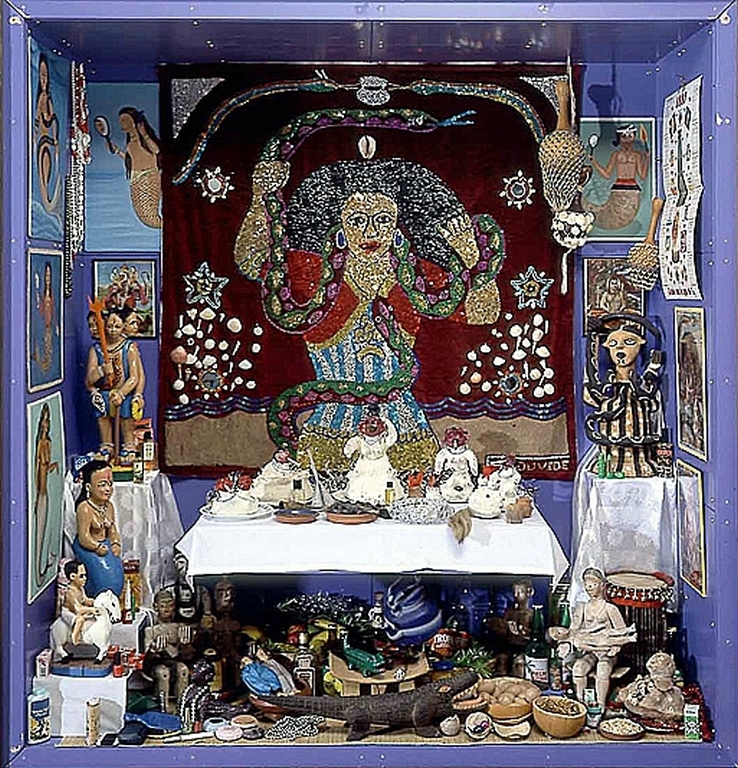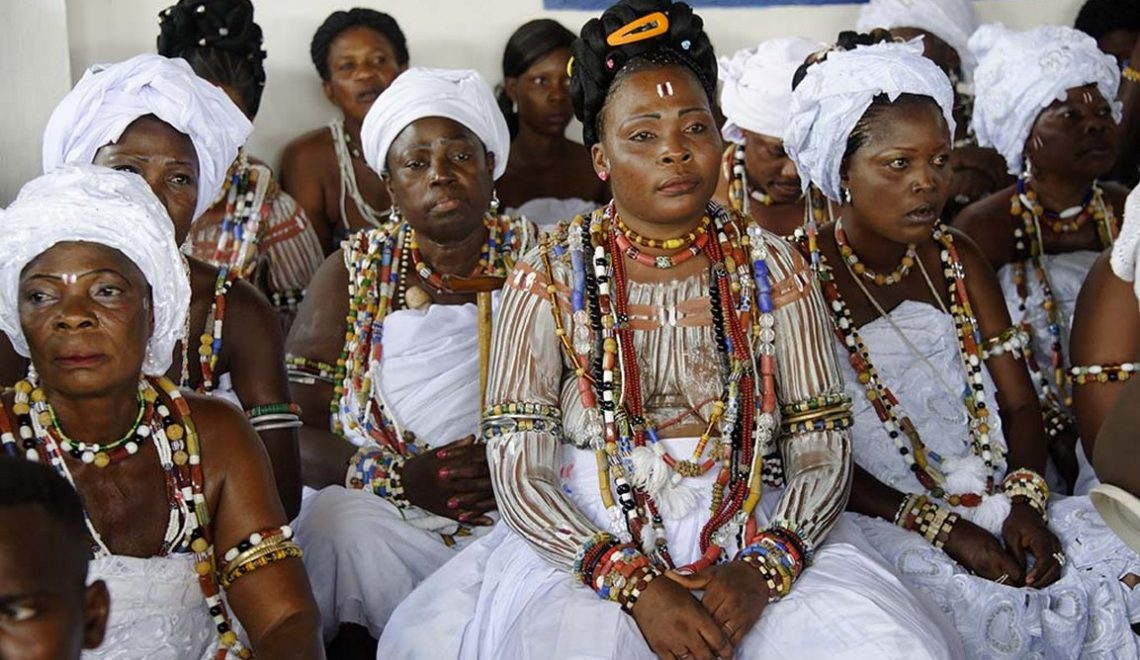
Half-female, half-fish, half-terrestrial, half-aquatic, Mami Wata is an African divinity, a legendary spirit linked to vodun. This cult is particularly prevalent among the Fon (Benin and Togo), Ashanti (Ghana) and Yoruba (mainly Nigeria) peoples. Meet this powerful siren, the object of as many beliefs as there are followers.
The cult of Mami Wata, the goddess of the sea and oceans, cannot be mentioned without speaking of the religion that is the cultural foundation of the peoples of the Gulf States of Benin: vodou (or vodun in Fon). "The kingdom of Danhomé (now Dahomey) really instituted this vodun by bringing together in an unprecedented way what already existed in a disparate, non-hierarchical way among the Ashanti of Ghana and the Yoruba of Nigeria", explains researcher and historian Gabin Djimassé. Built on a hierarchical and structured cosmogony, it includes countless gods (or voduns) and entities, spirits or invisible powers that people strive to conciliate in order to obtain favours. Even today, it governs the daily lives of most Beninese. At the top is Mawu-Lissa, the supreme god who reigns over all the others and must never be represented. Mawu-Lissa created the voduns and gave them certain powers which they use to preside over human destiny, within the strict limits that Mawu-Lissa has conceded to each deity in a domain that is exclusively reserved for him. In Benin, these voduns are divided into six major families, making up the pantheon. They can be identified with the forces of nature (lightning, water, sky, earth) as well as prestigious ancestors, most often those of royal lineage. These include the god Sakpata, the god of smallpox and, more broadly, of disease, Hebioso, the god of lightning, and Agassou, the deified ancestor of the Kings of Abomey, their 'tohouio'. All these voduns in turn gave rise to many descendants, more or less important gods and an infinite number of combinations, with several divinities being able to associate with each other. These spirits live with humans. Each of them has its own area of activity, its own attributes and specific functions, and has its own representative in the fauna and flora.
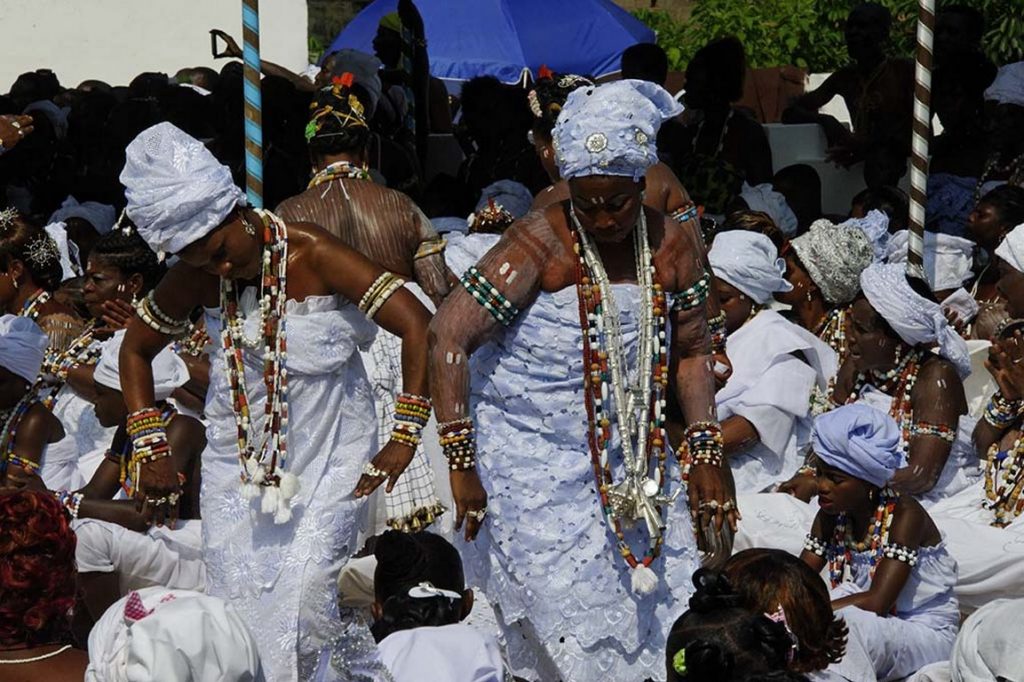
Legba, a divinity apart
"Within these large families, there are also cross-functional entities, Gabin Djimassé explains. Legba is the most important of all. It represents the force of fertility and male virility. He is one of the three pillars of Fon vodun, alongside the divinatory art of Fa and Minon Nan, the representation of the woman capable of engendering life. Legba mediates between all the vodun families and is the intercessor between the earthly world and the world of the gods. You can send him on a mission, ask him for help to succeed in a project, or pass on a message to another vodun, in return for a few offerings (water, oil, cowrie shells, balls of akassa - made from maize flour -, a few coins and a chicken sacrifice in front of his altar), as Legba knows all the languages of the divinities and of mankind".. However, he can also be devious and purposely transform the commissions for which he is responsible. As a result, he is held in high esteem, even veneration, because he is so feared. In practice, he is always involved in all the ceremonies, cults, rituals and sacrifices to all the divinities. As a liaison officer, Legba also plays the role of policeman and guardian of the city, warning of dangers and protecting against bad luck. Hence the need for everyone to have their own 'Legba'.

Mami Wata, an avatar of Ocean Dan
"Among the transversal entities, there are also the Dan (spirits of prosperity), continues Gabin Djimassé. These include the Dan of the forest, the Dan of the termite mound, the Dan of the hills and mountains, the Dan of the watercourses and, finally, the Dan of the sea and the ocean, which, over the course of the nineteenth century, became the Dan of the sea.e century, took the patronymic of Mami Wata". The name is derived from "Mother water", which was quickly transformed into "Mommy Water", then "Mammy water". It was the English, who came to seek gold on the coast of Ghana and succeeded the Portuguese (in 1870), who gave this name to the Ashanti ethnic group, who lived near the coast and worshipped the spirits of the water. Unlike the other settlers, the English were tolerant and supported local cultural practices. They associated her cult with that of the mermaid, a female aquatic spirit. Some researchers believe that the image of the mermaid was introduced to Africa through the accounts of the first European sailors from the 15th century onwards.e This mythical creature was also often depicted on the figureheads of their ships. The fact remains that aquatic or lake divinities had already been represented for a long time, in both West and Central Africa. In the Ibo culture of Nigeria, we worshipped the ndi mmili, water spirits. In the Kongo civilisation, these spirits were known as mbumba, and often referred to a large snake. Finally, in Nigeria Yemoja, whose name means "The mother whose children are fish" and who became Yemandja in Brazil, mother of orishas in Candomblé (Afro-Brazilian religion).
The cult of Mami Wata has spread beyond the coastal perimeter to the north. She is celebrated in a geographical area that brings together cultures and peoples as diverse as the Ibo of Nigeria, the Fon and Ewe of Benin, the Bamiléké of Cameroon, the Kongo of Congo, and even Togo. His cult grew in importance between the 15th and 16th centuriese and the XXe century and is still very much alive.
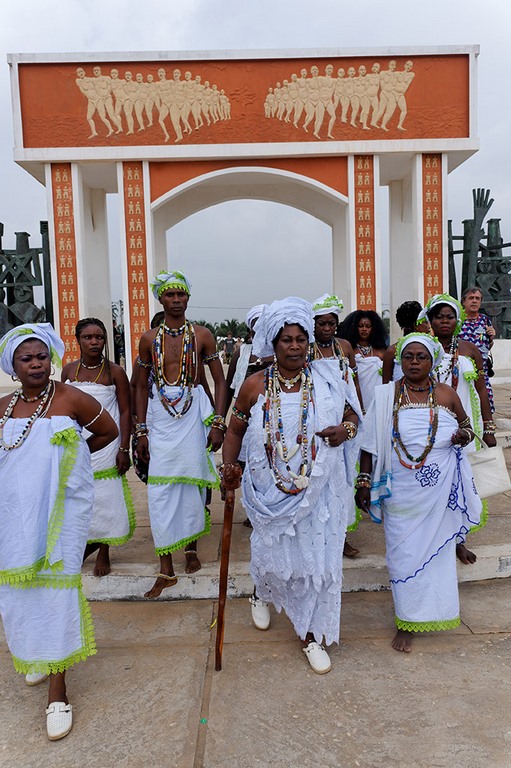
A supranatural divinity, alien to man and nature
A hybrid figure, half-woman half-fish, half-terrestrial half-aquatic, a water spirit feared by the fishermen of Nigeria and Ghana, a man-eater who roams the African night in the guise of a ghost, Mami Wata is a beautiful woman with a mermaid's tail, embraced by a snake or accompanied by a cobra. Gabin points out that "Mami Wata's imagery was strongly influenced by representations of Hindu goddesses, reproductions of which were circulating from Nigeria. She is also very present in the markets, another allegory of the invisible world, where the crowds attract the lust of evil spirits. She also appears in bars, always in the guise of a beautiful woman who draws men in and tries to seduce them. "It is an individual entity that followers implore and venerate for themselves or collectively, notes our historian. Mami Wata's followers make her out to be a Dan in her own right, but this is not true; she does not have the same power of influence as the other gods of the great Vodun families". However, it is attributed with multiple powers and is feared. She can bring wealth and happiness, and help solve problems related to procreation - infertility, impotence or infant mortality. Some see her as an irresistible seductive presence who offers the pleasures and powers that come with devotion to a spiritual force. The vast majority of her followers are women, initiated in a place called hounkpa (convent) by priestesses called Mamisii or Mamissi. In this convent, impetrants learn the dance steps and songs they will perform during the ceremonies, as well as the rituals and prohibitions. "There are days reserved for your spirit, days when a disciple of Mami Wata must not go near her husband. You have to be very careful with these women because when they are possessed, their behaviour will change, their smell will change and they can have violent outbursts. You must never take them down to the water when they are in a trance.Gabin warns. During the ceremonies, which can involve several convents, the initiates, adorned with necklaces and bracelets, wear long white cotton skirts. They make offerings to the goddess and pray as they advance into the sea, taking dance steps that imitate the movement of the waves, bending and straightening their bodies and undulating with their raised hands. "Mami Wata only accepts imported products as offerings: sweet drinks, boiled maize with sugar or honey, beans and nuts. Not forgetting lots of powder and perfume", says Gabin Djimassé.
Today, the myth of Mami Wata is far from set in stone. It is nourished every day by the new symbols bestowed on it by those who make it their own. Different ethnic groups and beliefs worship it in different ways. And our vodun specialist concludes: "Men and gods are alike and they need each other: men need the indulgence and favour of the gods; the gods need the offerings and sacrifices of men."
Gabin Djimassé, historiographer
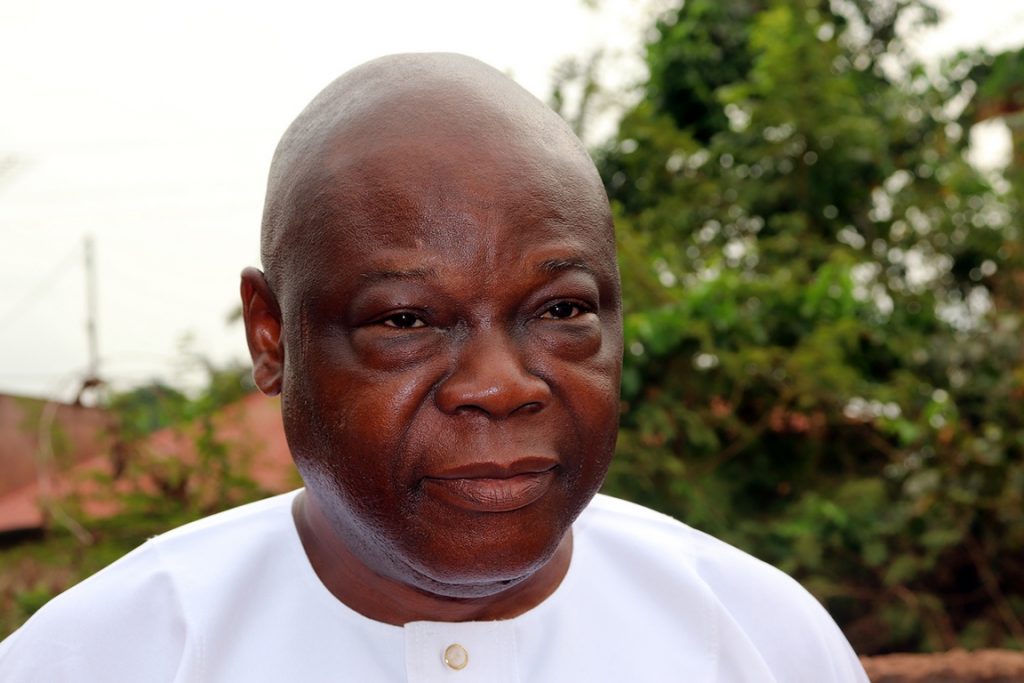
Bernard Gabin Djimassé was born in 1959 in Abomey (Benin), where he lives. After studying sociology, he decided to devote himself exclusively to studying Fon culture and the Vodun religion through the study of its convents. A researcher and historiographer, he is the director of the Abomey and Region Tourist Office, and in this capacity has carried out missions in France, Italy and the Netherlands. He is the author of several articles on Abomey culture, including The installation of artists and royal patronagepublished by the Fondation Zinsou for the musée du quai Branly (2009) and Vodun. Origin, contemporary practice, European perception and misunderstanding, and coercive psychology. He is a Grand Initiate of the Tohouio Agassu royal lineage.
Text: Brigitte Postel
Photos: François Guenet (unless otherwise stated)
This report appeared in issue 4 of Natives, des Peuples, des Racines. https://www.revue-natives.com/editions/natives-n04/

